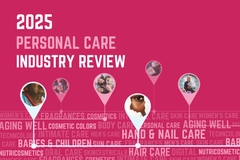EU scientific body declares benzyl salicylate safe for cosmetic use up to safety limits

13 Jun 2023 --- Following data collection inspecting concerns about potential endocrine-disrupting properties of benzyl salicylate, the European Scientific Committee on Consumer Safety (SCCS) has declared it to be safe when used up to the maximum concentrations stipulated.
The maximum use of benzyl salicylate in hydroalcoholic-based fragrances (spray and non-spray) is 4%, according to SCCS. For rinse-off body products, this is 1.3%, and for leave-on body products (non-spray/spray/aerosol) this is 0.7%.
For rinse-off skin and hair products (except rinse-off body products), leave-on skin and hair products (non-spray/non-aerosol)(except body lotion) and leave-on hair products (spray/aerosol), the maximum use of benzyl salicylate is 0.5%.
In the lower ranges, the maximum use of benzyl salicylate for face make-up products and make-up remover is 0.2%, followed by deodorant products (spray/aerosol) at 0.91% and oral care at 0.004%.
The commission requested the SCCS to conduct a safety assessment on benzyl salicylate based on information from various stakeholders, such as fragrance companies.
Labeled on ingredients lists
The available data on benzyl salicylate provides some indications for an endocrine mode of action, but there is no evidence that this results in potential endocrine effects. In addition to various human and animal tests, the Benzyl Salicylate Consortium submitted a dossier with the maximum use concentrations.
Benzyl salicylate is produced naturally in various plants and can be synthesized as a fragrance ingredient for cosmetics, household products and medicines.
In entry 75 of Annex III to the Cosmetics Regulation, it is regulated for labeling as an allergen.  Benzyl salicylate can be synthesized as a fragrance ingredient for cosmetics.
Benzyl salicylate can be synthesized as a fragrance ingredient for cosmetics.
The regulation does not restrict the use of benzyl salicylate in cosmetics and personal care products but states that “its presence must be indicated in the list of ingredients when its concentration exceeds 0.001% in leave-on products and 0.01% in rinse-off products”.
It can also be used as a UV absorber. The Cosmetics Regulation does not have explicit provisions on endocrine disruptors but provides a regulatory framework that ensures a high level of protection of human health.
The SCCS mandates do not address environmental aspects. Therefore, this assessment did not cover the safety of benzyl salicylate for the environment. Environmental concerns that substances used in cosmetic products may raise are considered by applying Regulation (EC) No 1907/2006 (‘REACH Regulation’).
Scientific evidence submitted
Various human and pig skin studies were evaluated for the SCCS decision on benzyl salicylate, including skin absorption, benzyl alcohol toxicokinetics, cytotoxicity and carcinogenicity.
Stakeholders submitted scientific evidence demonstrating benzyl salicylates’ safety as a fragrance ingredient in cosmetic products.
One of the more significant submissions includes two studies investigating the absorption of benzyl salicylate in vitro using human skin and an Organisation for Economic Co-operation (OECD) Test Guideline study from 2021. The experiment was repeated six times.
A stability study before the main study showed that 5 mg of benzyl salicylate was homogenously formulated and was stable in a representative blank (i.e., without benzyl salicylate) body lotion formulation for at least 35 hours at 32°C.
In other industry developments, the EC sought data on CBD used in cosmetic products as several EU member states and civil society organizations raised questions about the potential risk to consumer health. Manufacturers, ingredient producers and industry members can submit their responses until the end of September.
Coupled with this, the SCCS has published its preliminary opinion on methylparaben after considering the concerns related to the potential endocrine activity of the antifungal agent.
The SCCS has also published its final opinion on using aluminum in cosmetic products – other than deodorants, antiperspirants, lipsticks and toothpaste. After a commenting period following its initial publication, SCCS concluded that aluminum compounds are safe when used within the maximum levels indicated in the review.
By Inga de Jong












